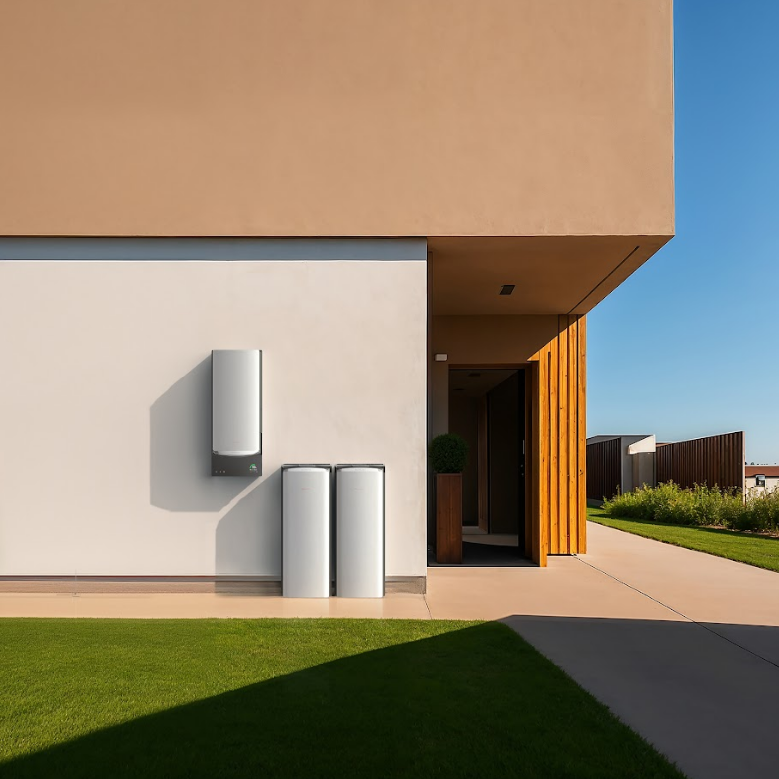How Much Money Can I Save With Solar Energy in 2025
Electricity prices are going up across the United States. Many families now pay more than before, and this trend may continue. Solar energy gives people a way to lower bills and control future costs. For homeowners who want to store energy, solar power with battery systems brings even more value. This article explains how much money large home battery users can save with solar energy in 2025.
Why Energy Costs Are Rising
Many homes now use more electricity. This includes running air conditioners longer, using electric cars, and relying more on smart devices. At the same time, the power grid is getting older. New power lines and equipment cost money. These costs are passed to customers. In many states, utility companies have already asked for rate increases.
The average U.S. home now pays about 15 to 20 cents per kilowatt-hour (kWh). In some places like California, Hawaii, or New York, rates can be even higher. That means solar energy becomes more valuable every year.
What Affects Your Solar Savings?
Not every home saves the same amount of money with solar. The final savings depend on four key things. If you understand these factors, you can plan better and save more.
Your Home’s Solar Potential
This means how well your roof works for solar panels. If your roof faces south, it gets the most sun. A roof angle between 15 and 40 degrees is ideal. Shade from trees, chimneys, or nearby buildings can block sunlight. That lowers the energy your system can produce.
Also, bigger roofs can fit more panels. More panels mean more power, which leads to bigger savings—especially for homes with high energy needs. If your roof is small or partly shaded, your savings may be less. A solar installer can check your roof and tell you how much power your panels could make.
Your Electricity Use
Homes that use more power get more value from solar. This is because solar helps you avoid buying electricity from the grid. If your monthly bill is over $200, solar can replace a big part of that cost.
If your home runs air conditioning often, uses electric heaters, or charges an electric car, your energy use is likely high. A bigger system with a home battery can help cover that usage and store extra energy for nights or cloudy days. These homes often see savings of $150–$300 per month.
Electricity Rates in Your Area
Electricity prices are not the same in every state. If your utility company charges 15 to 25 cents per kWh, your payback time will be shorter. In places like California, Massachusetts, or Hawaii, rates are high, so solar gives strong savings fast.
In states with cheaper power, like Idaho or North Dakota, solar still works but takes longer to pay off. Some states also offer time-of-use (TOU) pricing, where electricity costs more during certain hours. A home battery can help you avoid buying power at those expensive times.
Your Payment Method
How you pay for solar affects your savings timeline.
- Cash Purchase: You pay for the system all at once. There are no monthly payments. You start saving right away. After the payback period—usually 6 to 9 years—you get free power for many years.
- Loan: You make monthly payments with interest. Upfront cost is lower. You still save on your electric bill, but part of that savings goes toward your loan. After the loan is paid off, you keep all the savings.
- Lease or Power Purchase Agreement (PPA): You do not own the system. You pay a set monthly fee, usually lower than your old electric bill. You save a little each month, but you don’t get tax credits or full benefits. You also have less control over the system.
Cash brings the most savings over time. Loans offer balance between cost and savings. Leases work best for those who want no upfront cost but steady savings.
In summary, how much solar can save you depends on your roof, your power usage, the local electricity rate, and how you choose to pay. Homes that use lots of energy, live in high-rate states, and install good-sized systems on sunny roofs will save the most.


How to Calculate Solar Payback
The solar payback period means how many years it takes to save back the money you spent on your system. After that point, the power you get from the system is basically free. You only need three simple steps:
Step 1: Add Up the Full System Cost
Include the price of both solar panels and the battery. Use the amount before any rebates.
Example: A full system with 10kW panels and one home battery costs $28,000
Step 2: Subtract Tax Credits and Rebates
The federal tax credit gives back 30% of the total system price. Some areas also offer local rebates.
- 30% of $28,000 = $8,400
- $$28,000 –$$8,400 = $19,600 final cost
This is the amount you need to recover over time.
Step 3: Divide Final Cost by Yearly Savings
Check your current monthly electricity bill. Multiply by 12 to get your yearly savings.
In this example, we use an average electricity rate of $0.15 per kilowatt-hour (kWh). A 10kW system can cover around 1,300 kWh per month, which saves about $200 each month on your bill.
- Monthly savings: $200
- Yearly savings: $200 × 12 = $2,400
Now divide the final cost by your yearly savings:
$$19,600 ÷$$2,400 = 8.17 years
Once your system hits that point, the energy it produces is basically free. Panels can last 25–30 years, so you may enjoy 15–20 years of savings after the system pays for itself.


What About Incentives?
In 2025, solar incentives are still strong, but time may be running out.
Federal Tax Credit: Still 30% in 2025
Homeowners who install a solar system can still claim the Federal Solar Investment Tax Credit. It gives back 30% of the full system cost, including the battery. If your system costs $30,000, you can get $9,000 back when you file your federal taxes.
But this credit might not last much longer. Lawmakers are discussing changes. Some proposals want to end or reduce the credit starting in 2026. One plan could even cancel it six months after a new law is passed. If you want to use the 30% credit, 2025 may be your last full chance.
State and Local Programs
Many states and cities offer extra savings on top of the federal credit. These programs are different in each area, but they can include:
- Cash rebates (such as $1,000 to $5,000 off)
- Property tax breaks (solar panels won't raise your property tax)
- Net metering (you earn credits for extra power your system sends to the grid)
- Solar credits (some states give payments for every kilowatt-hour your panels generate)
These benefits can shorten your payback time by 1–3 years. To check what is offered in your area, visit DSIRE website (Database of State Incentives for Renewables and Efficiency). Just enter your ZIP code.
What Happens After the Payback?
Once your solar system reaches its payback point, usually between 6 and 12 years, your panels continue to produce energy for much longer. Most solar panels are covered by 25‑ to 30‑year warranties and can operate even beyond that timeframe with slight efficiency loss. Homeowners in regions like New York or Maryland often enjoy 15 to 20 years of almost free electricity after full payback, creating significant long-term savings .
Several studies also confirm that solar installations can boost home resale value. A 2025 study found homes with solar panels sold for about 6.9 percent more on average—adding more than $25,000 to the sale price of a typical U.S. home. Earlier research showed home buyers are willing to pay roughly $4 for every watt of solar capacity, which could mean a $24,000 value increase for a 6 kW system. These figures suggest a fully paid-off solar system can not only offset energy bills but also raise property value.
Is Solar Power Worth It in 2025?
Yes. For many homes, especially for those that use a lot of power and intend real energy independence. It helps fight rising energy bills. It gives you more control. It protects families during outages. And it brings clean, reliable power to your home.
If a home has good roof space and enough sunlight, the math works out. Most families break even in 6 to 9 years. After that, your power is nearly free.
The savings get even better when you pair solar panels with a strong battery. One of the most advanced choices in 2025 is the EcoFlow OCEAN Pro. It stores up to 80kWh of power—far more than most home systems. That means it can run your lights, fridge, AC, washing machine, and even charge your EV during the night or a blackout.
It also charges fast during the day. With support for up to 40kW of solar input and 8 MPPT channels, it works well even with complex roof layouts or panels facing different directions.
The EcoFlow OCEAN Pro is made for real homes, not just perfect weather. It runs safely in high heat (up to 140°F) and handles floods up to 3.3 feet deep. If you live in an area with storms, outages, or summer heat waves, that kind of durability really matters.
It also connects with smart devices and even gives you energy tips through a built-in AI assistant. You can track everything through your phone, get system alerts, and even sell power back to the grid if your utility allows it.
So, is solar worth it? On its own—yes. But with EcoFlow OCEAN Pro, it becomes a full power solution that covers sunny days, stormy nights, and everything in between.